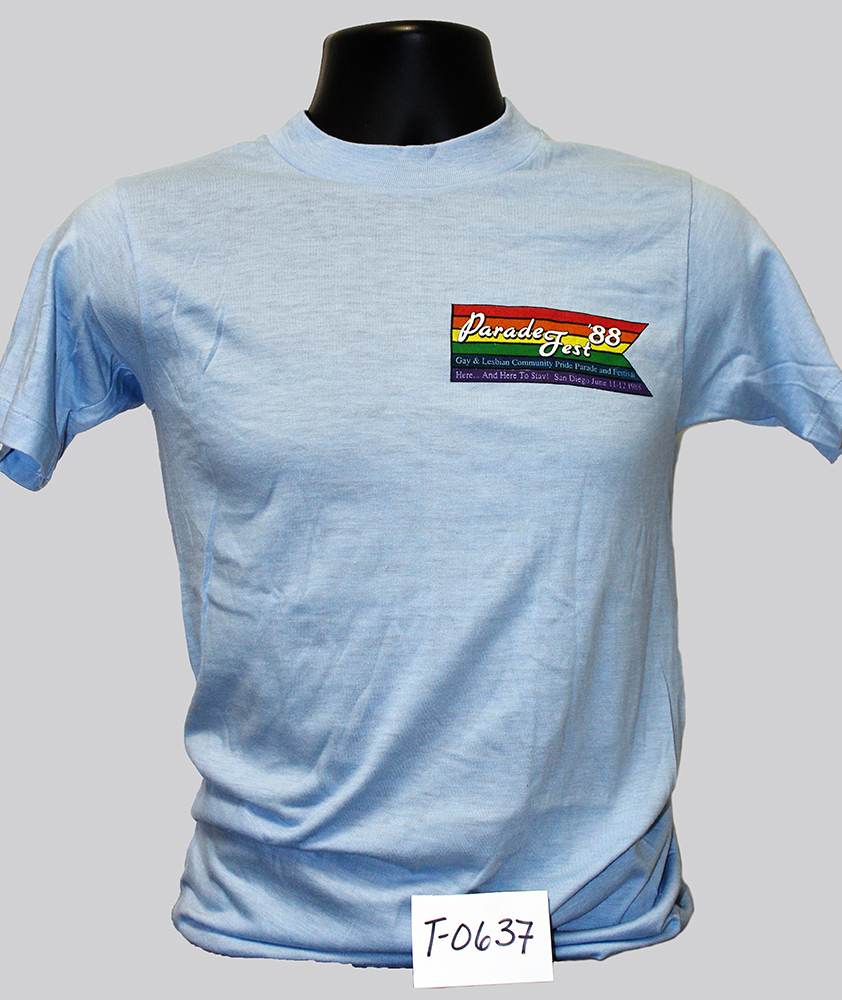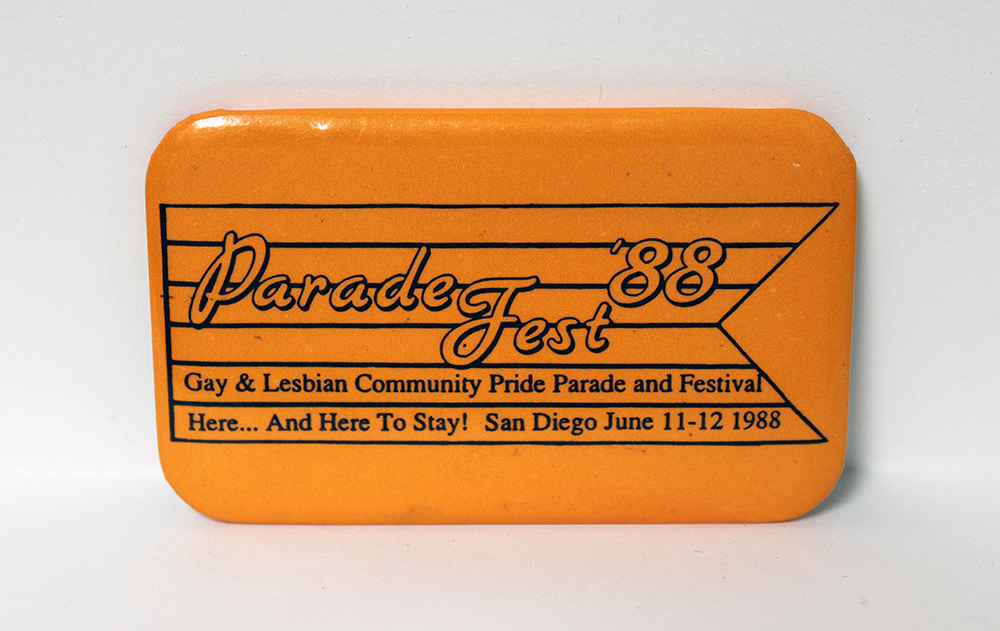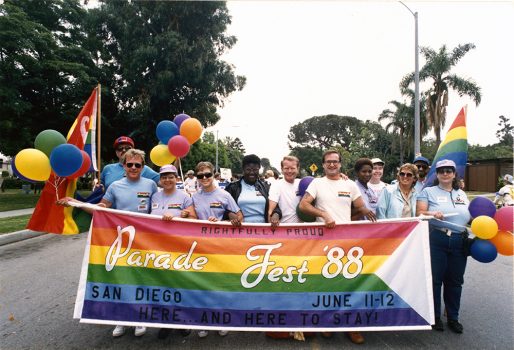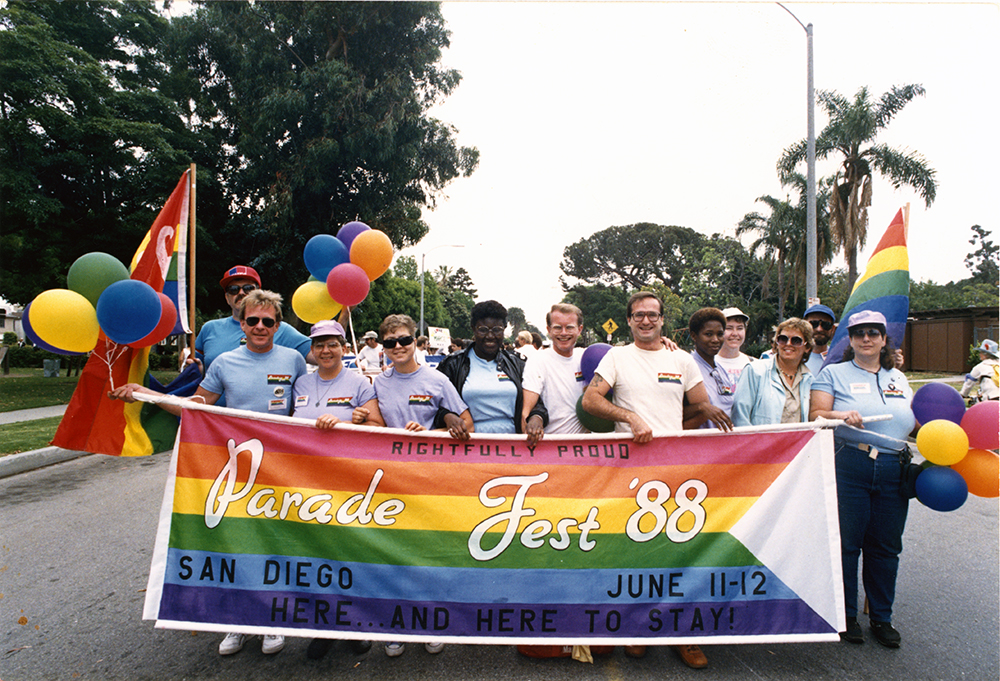
Following the festivities of the previous year, Lambda Pride organizers once again had a falling out. An ad-hoc committee was formed in January 1988 to produce that year’s Pride events, which they dubbed Parade Fest. The national theme of “Rightfully Proud” was adopted to emphasize the importance of the gay vote, as 1988 was an election year. At the local level, Parade Fest proclaimed “Here…And Here To Stay!” to highlight the community’s resistance to adversity. Additionally, the rainbow flag was selected as the official logo of Parade Fest to promote unity in the community. The 1988 Pride guidebook is filled with language contending Pride’s commitment to honoring the community’s differences, with unity and celebration of diversity featuring prominently as motifs promoted by Parade Fest. Increasingly, cultural niche groups would continue to form in gay San Diego, although they weren’t necessarily represented by Pride. In 1988, Gay/Lesbian Asian-Pacific Islanders Social Support (GLASS) was founded by James Mitsuo Cua, and the International Latina Lesbian Organization (ILLO) was established. Lesbians and Gays of African Descent (LAGADU) would form the following year.
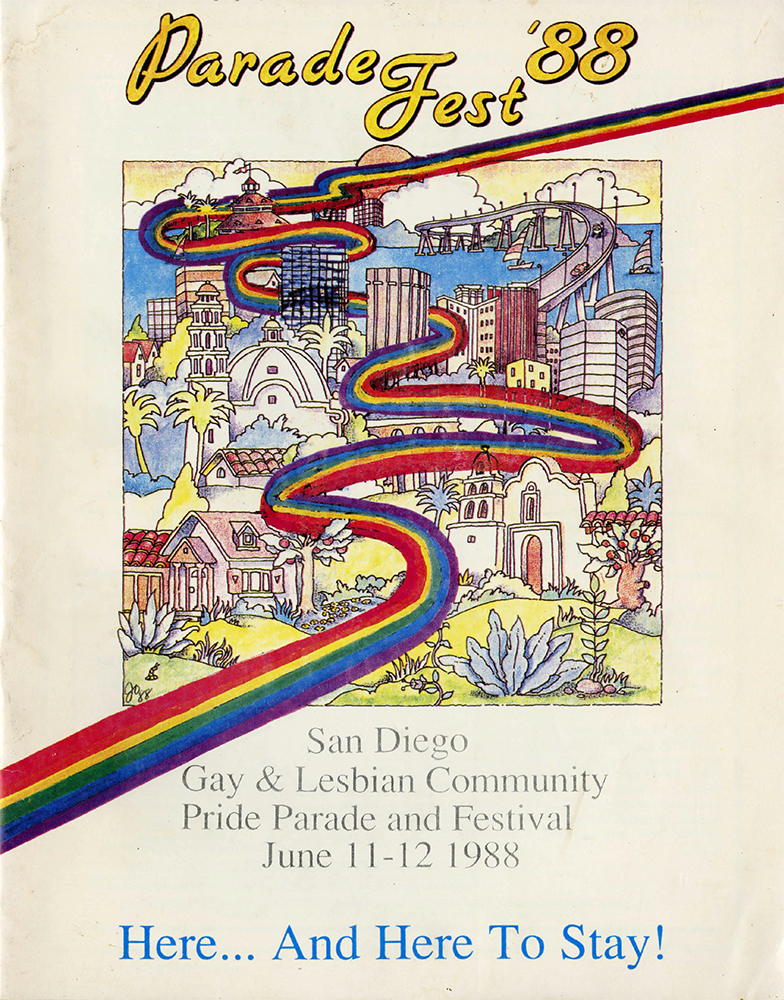
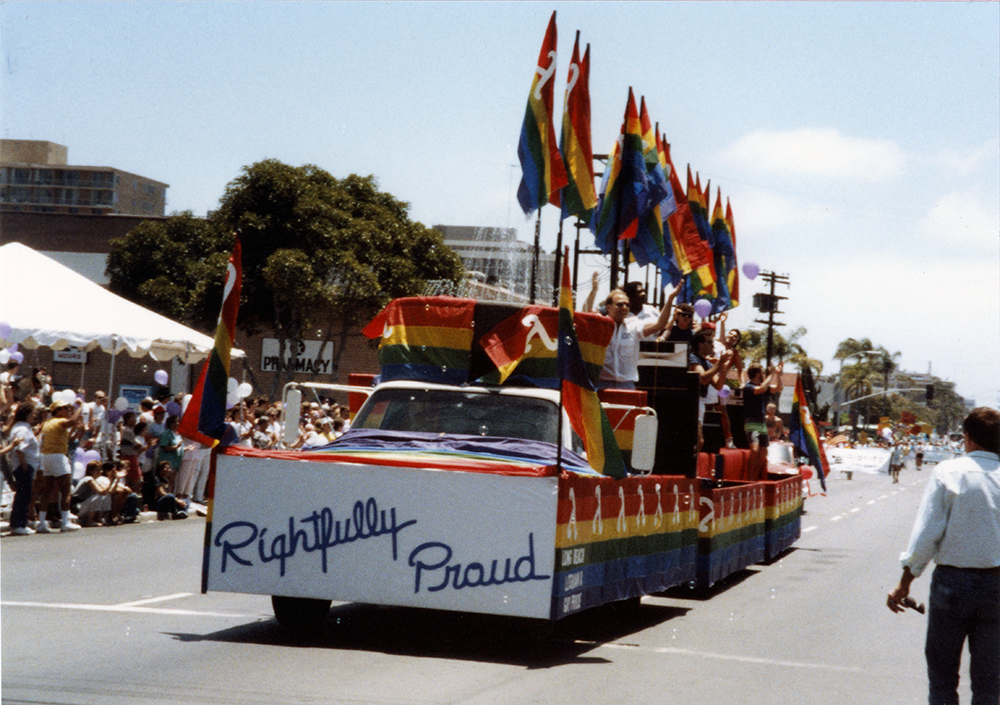
A new feature of Pride weekend this year was the “Pride Prom” on Friday June 10th at the Centro Cultural de la Raza in Balboa Park. This event was meant to afford members of the gay community the opportunity to attend prom with the true date of their choice. The following morning of June 11th kicked off with the annual Front Runners Pride Run at 9 a.m., followed by the parade at noon. The parade began at Sixth Ave. and Laurel St. and featured 90 contingents, including the newly-established ACT UP San Diego and Sistah Boom, a 30-piece lesbian percussion group from San Francisco. Political participation included Supervisor Tom Dolan from San Mateo County, and republican candidates for the California Assembly Byron Wear and Rob Butterfield. Grand Marshals were Judy Foreman, gay community advocate and owner of The Big Kitchen restaurant, and Clint Johnson, owner of Show Biz Supper Club and Bee Jay’s and founding board member of the AIDS Assistance Fund of San Diego County. Sharon Kowalski was named Honorary Grand Marshal – Kowalski had fallen into a coma following a car accident and her partner, Karen Thompson, had been denied any contact or legal standing. An empty wheelchair rode in the parade for Kowalski. The legal rights of gay and lesbian couples would remain a prominent issue to be tackled in the following decades.
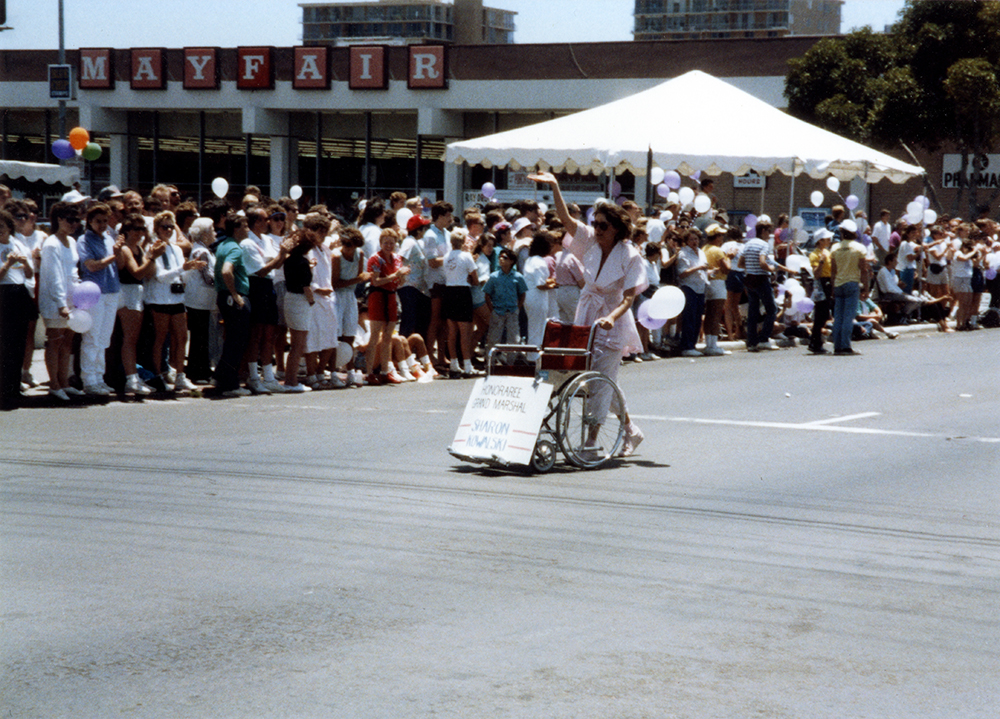
The AIDS crisis continued to be a critical point of concern at Pride in 1988, although San Diego did experience some “wins.” In February, San Diego City Council passed a county ordinance banning discrimination against those living with AIDS. However, this protection was threatened by Proposition 69, another discriminatory bill against people with AIDS promoted by Lyndon LaRouche for the June ballot. Fortunately, it was defeated just days before Pride weekend. To honor those lost to AIDS, 6,000 lavender and white balloons were released and the parade was halted for a moment of silence. A crowd of 15,000 spectators joined the parade of thousands in honoring those lost.
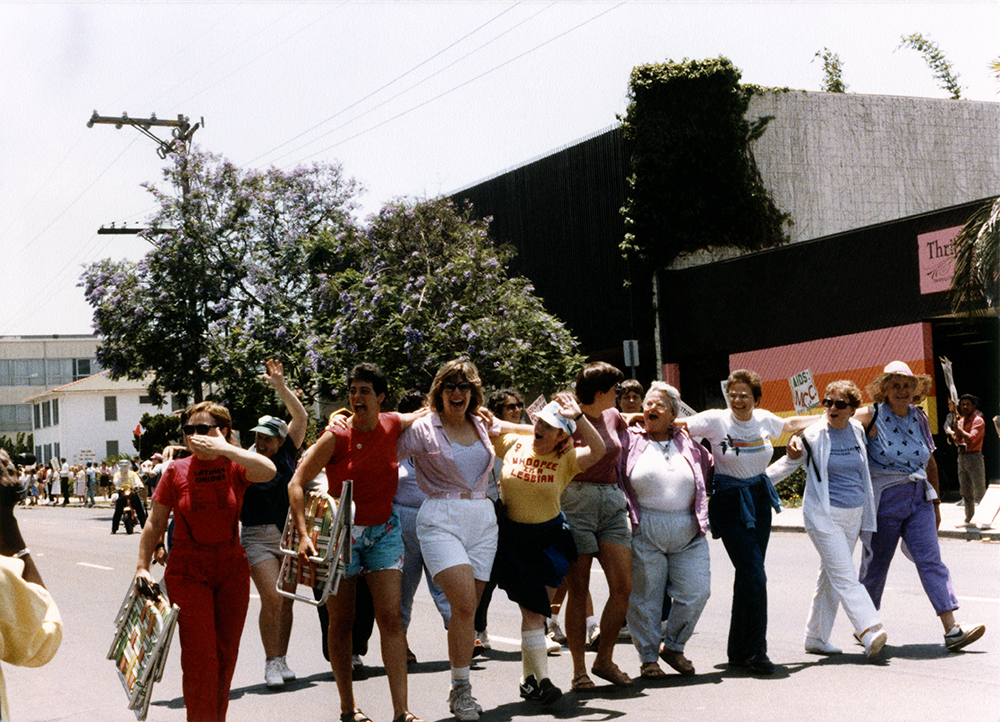
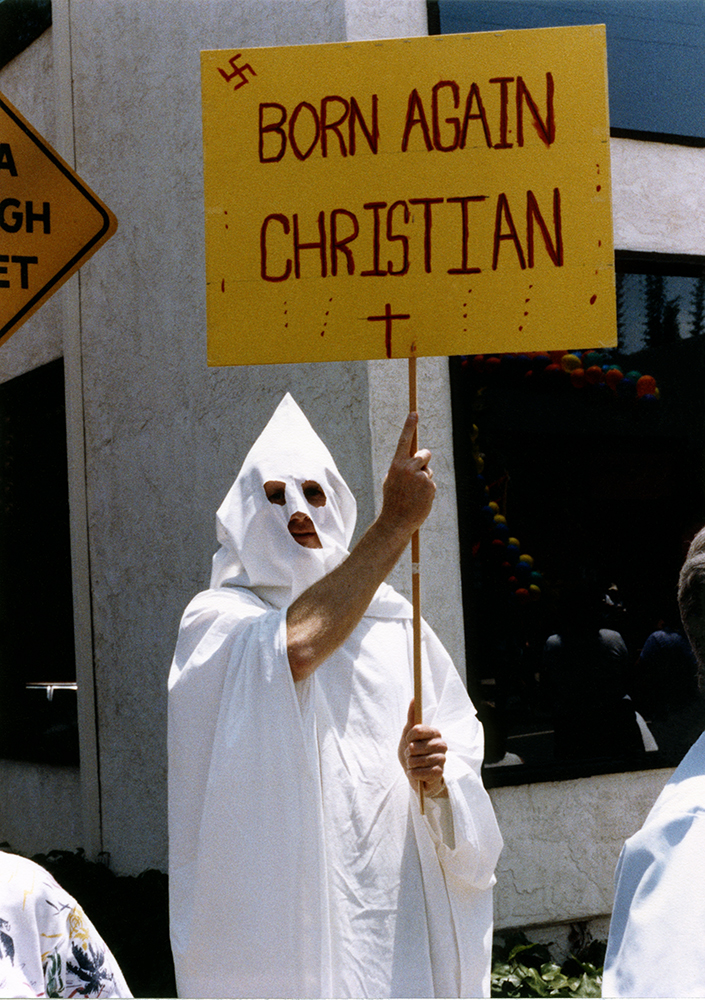
Fundamentalist presence continued but was significantly diminished. Pastor Dorman Owens, who led the fundies for years, had plead guilty for his role in a 1987 attempted bombing of a family planning clinic that March. Although Owens was released on bail, he did not engage with Pride that year and many of his followers apparently followed suit. The Future Former Fundy Fighters continued to provide a human buffer zone during the event, although there were reportedly only a dozen protesters. Collaboration with the police for Pride security continued in 1988 as well. That year, Chief of Police Bill Kolender incorporated a mandatory course on the gay and lesbian community into the Regional Law Enforcement Training Center Program. Speakers from various causes and organizations were featured to display the diversity of the community, including republican activist Susan Jester, democratic activist Linda Sabo, lesbian activist Diane Germain, republican Latino activist Nicole Ramirez Murray, and AIDS activist Albert Bell. Around 3,000 attendees listened to these folks speak on their respective causes at the Organ Pavillion.

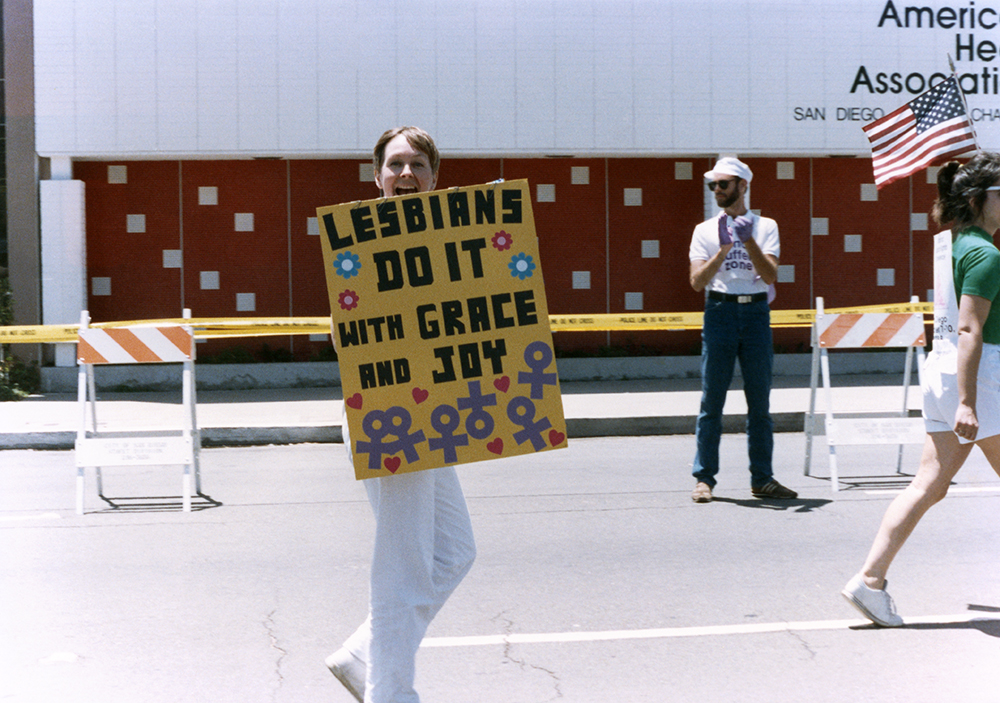
The festival was held on Sunday from 10 a.m.-10 p.m. in a new location: the Old Balboa Naval Hospital parking lot at Park Boulevard and Presidents’ Way. This 2-acre space was larger than West Coast Production Company’s lots and allowed for carnival rides, a beer garden, multiple dance floors (including country-western), a children’s area, and a resource fair. The entertainment committee also booked more acts than ever before this year, including local bands, comedians, performance troupes, singer-songwriters, and more. Pop singer Helen Reddy headlined. On the surface, Parade Fest ‘88 was a success. High numbers of attendance at the parade, rally, and festival demonstrated the increased popularity of Pride celebrations. However, the weekend left the Parade Fest committee nearly $40,000 in debt. Once again, community members would need to reorganize to ensure the continuation of Pride.
